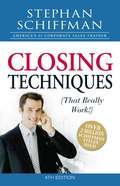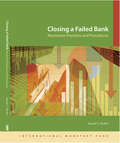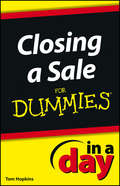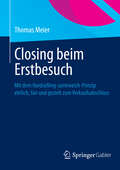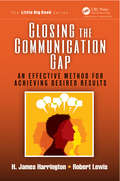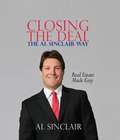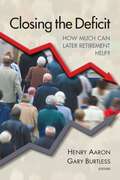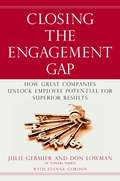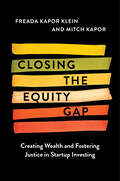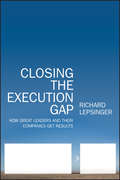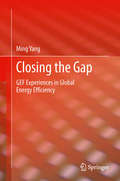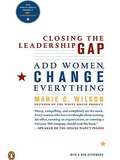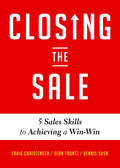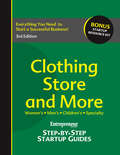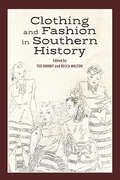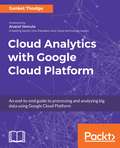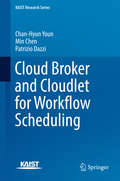- Table View
- List View
Closing Gaps and Improving Performance: The Basics of Coaching
by Harvard Business Review PressWhen performance gaps are identified, effective coaching can often close these gaps. The skills required to be a good coach are often acquired on the job, but formal skill training can help develop your coaching abilities and sometimes benefit your staff directly. This chapter helps to identify coaching opportunities and provides a four-step process for active coaching.
Closing Sysco: Industrial Decline in Atlantic Canada’s Steel City (Studies in Atlantic Canada History)
by Lachlan MacKinnonClosing Sysco presents a history of deindustrialization and working-class resistance in the Cape Breton steel industry between 1945 and 2001. The Sydney Steel Works is at the heart of this story, having existed in tandem with Cape Breton’s larger coal operations since the early twentieth century. The book explores the multifaceted nature of deindustrialization; the internal politics of the steelworkers’ union; the successful efforts to nationalize the mill in 1967; the years in transition under public ownership; and the confrontations over health, safety, and environmental degradation in the 1990s and 2000s. Closing Sysco moves beyond the moment of closure to trace the cultural, historical, and political ramifications of deindustrialization that continue to play out in post-industrial Cape Breton Island. A significant intervention into the international literature on deindustrialization, this study pushes scholarship beyond the bounds of political economy and cultural change to begin tackling issues of bodily health, environment, and historical memory in post-industrial places. The experiences of the men and women who were displaced by the decline and closure of Sydney Steel are central to this book. Featuring interviews with former steelworkers, office employees, managers, politicians, and community activists, these one-on-one conversations reveal both the human cost of industrial closure and the lingering after-effects of deindustrialization.
Closing Techniques (That Really Work!)
by Stephan SchiffmanMany salespeople can line up prospects, recite the benefits of their product or service, and stir the interest of their client. But when it comes to actually closing the deal, they fail and the sale falls apart. That's where sales guru Stephan Schiffman comes in#151;and saves the sale. In this book, Schiffman reveals the pioneering techniques that have helped more than half a million salespeople nail the sales that matter. This book includes chapters on: the four words to avoid during meetings why salespeople shouldn't mix business with pleasure the most important word when closing a sale working existing accounts
Closing Techniques (That Really Work!)
by Stephan SchiffmanMany salespeople can line up prospects, recite the benefits of their product or service, and stir the interest of their client. But when it comes to actually closing the deal, they fail and the sale falls apart. That's where sales guru Stephan Schiffman comes in--and saves the sale. In this book, Schiffman reveals the pioneering techniques that have helped more than half a million salespeople nail the sales that matter. This book includes chapters on: the four words to avoid during meetings; why salespeople shouldn't mix business with pleasure; the most important word when closing a sale; and working existing accounts.
Closing Techniques (That Really Work!)
by Stephan SchiffmanMany salespeople can line up prospects, recite the benefits of their product or service, and stir the interest of their client. But when it comes to actually closing the deal, they fail and the sale falls apart. That's where sales guru Stephan Schiffman comes in-and saves the sale. In this book, Schiffman reveals the pioneering techniques that have helped more than half a million salespeople nail the sales that matter. This book includes chapters on:the four words to avoid during meetingswhy salespeople shouldn't mix business with pleasurethe most important word when closing a saleworking existing accounts
Closing a Sale In a Day For Dummies
by HopkinsGet the know-how to close a deal and make your quota--in a day!Closing a Sale In A Day For Dummies outlines the anatomy of a sales closing, offers strategies for asking the right questions, and gives you invaluable tips for overcoming tough customers. The anatomy of a closeQuestioning and listening strategiesNo frills closing techniquesOvercoming tough customersThis e-book also links to an online component at dummies.com that extends the topic into step-by-step tutorials and other "beyond the book" content.
Closing beim Erstbesuch: Mit dem Hardselling-samtweich-Prinzip ehrlich, fair und gezielt zum Verkaufsabschluss
by Thomas MeierIn den meisten Branchen herrscht heute ein Verdrängungsmarkt mit ähnlichen Produkten und vergleichbaren Preisen. Die Persönlichkeit des Verkäufers macht hier den Unterschied. Wer im Verkaufsspiel zur richtigen Zeit am richtigen Ort das Richtige tut, hat gewonnen. Dieses Buch liefert mit dem Hardselling-samtweich-Prinzip eine praxiserprobte, branchenunabhängige Methodik, mit der es gelingt, effizient, sicher und fair zum Verkaufsabschluss zu gelangen. Und das bereits beim ersten Besuch! Dabei setzt es in erster Linie auf die Veränderung des Verkäufers selbst. Denn in der richtigen Einstellung, Haltung und der zielführenden Arbeitsweise liegt der Schlüssel zum Erfolg. Gespickt mit vielen Zitaten, Erfolgsweisheiten und eigenen Erfahrungen motiviert der Autor in diesem Buch zu verkäuferischen Top-Leistungen. Zudem enthält es eine Step-by-step-Anleitung, die direkt zum Verkaufsabschluss führt. Das Hardselling-samtweich-Prinzip liefert die Regeln zum Verkaufsspiel und eine Anleitung, um das Spiel zu gewinnen. Dieses Buch lüftet die Geheimnisse von Top-Verkäufern und liefert die Grundlagen, um selber in der Meisterklasse mitzuspielen!
Closing the Care Gap with Wearable Devices: Innovating Healthcare with Wearable Patient Monitoring (Intelligent Health Series)
by Michael W. Davis Michael J. Kirwan Walter N. Maclay Harry P. PappasPatient-focused healthcare, driven by COVID-19 experiences, has become a hallmark for providing healthcare services to patients across all modalities of care and in the home. The ability to capture real-time patient data, no matter the location, via remote patient monitoring, and to transmit that data to providers and organizations approved by the consumer/patient, will become a critical capability for all healthcare providers. Of all the remote patient monitoring product designs, wearable medical devices are emerging as the best positioned to support the evolving patient-focused healthcare environment. This book is for those who are evaluating, selecting, implementing, managing, or designing wearable devices to monitor the health of patients and consumers. This book will provide the knowledge to understand the issues that mitigate the risk of wearable technologies so people can deliver successful projects using these technologies. It will discuss their use in remote patient monitoring, the advantages and disadvantages of different types of physiological sensors, different wireless communication protocols, and different power sources. It will describe issues and solutions in cybersecurity and HIPAA compliance, as well as setting them up to be used in healthcare systems and by patients.
Closing the Communication Gap: An Effective Method for Achieving Desired Results (The Little Big Book Series)
by Robert Lewis H. James HarringtonImproved communication in business means higher profits. Improved communication in government means happier citizens. Improved communication in healthcare means quicker recoveries, fewer lawsuits, and happier nurses and patients.Closing the Communication Gap can help readers improve communication by closing the gap between what the communicator mea
Closing the Deal
by Al SinclairClosing the Deal is a handy tip book for anyone looking to buy, rent or sell their place. With tips that others won't share with you, Al gives you advice and ideas to educate you on how to get things done effectively. For instance, baking cinnamon buns before you have an open house gives your property a very pleasant and homey feel. Home staging for cheap can get you more money for your property, and having bad credit, doesn't mean you can't get a mortgage! Al will take you through the DOs and DON'Ts of buying, renting or selling property, including what to be aware of when looking for the best real estate agent.
Closing the Deficit
by Henry J. Aaron Gary BurtlessFor the past two decades Americans over age 60 have increasingly delayed their withdrawal from the workforce, a reversal of a century-old trend toward early retirement. For instance, from 1991 to 2010 the employment rate increased by more than half among 68-year-old men and by about two-thirds among women of the same age.Using data from the Current Population Survey, Working Our Way out of the Deficit explores the historical trajectory of retirement and the labor force participation rate of older men and women. Who chooses to delay retirement? Have older workers delayed their departure from career jobs? How will working longer affect the outlook for the federal budget? Brookings economists Henry Aaron and Gary Burtless join with renowned colleagues to examine the impact of extended employment against the backdrop of the federal deficit problem. They posit that working longer could help reduce the soaring costs of entitlement programs including Social Security and Medicare.Aaron and Burtless have also developed new evidence on the role of career jobs. This evidence suggests that lengthening the careers of older workers who have held their jobs for a decade or more significantly contributes to the trend toward later retirement. As the nation faces a prolonged jobs gap, Working Our Way out of the Deficit provides an important work on a crucial segment of the employment market and guides us toward a path for future recovery.
Closing the Deficit
by Gary Burtless Henry AaronAs the average age of the population continues to rise in industrialized nations, the fiscal impacts of aging demand ever-closer attention. Closing the Deficit examines one oft-discussed approach to the issue-encouraging people to work longer than they now do.Workers would spend more years paying taxes and fewer years drawing pension and health benefits. But how much difference to spending and revenues would longer working lives make? What steps could be taken to make longer working lives attractive? And what would happen to older Americans not in a position to prolong their work lives? Leading scholars examine these issues in Closing the Deficit, edited by Brookings economists Gary Burtless and Henry Aaron.
Closing the Engagement Gap: How Great Companies Unlock Employee Potential for Superior Results
by Don Lowman Julie GebauerExpert advice and examples show how managers can inspire high levels of commitment When people are truly engaged in their work they give more "discretionary effort" and make a huge difference to their company. They ask, "What's in it for us?" instead of "What's in it for me?" Yet an engaged workforce is as rare as it is valuable. A groundbreaking global study, led by Julie Gebauer and Don Lowman of Towers Perrin, shows that most people are not engaged and don't contribute as much value as they could. Not because they're inherently lazy or apathetic, but because their companies and managers don't know how to draw out the best from them. For instance, while pay and benefits are critical in attracting talent to a company, they have little effect on engagement. Instead, there are five proven ways to engage employees, including: Grow them by helping them develop skills and Knowledge Involve them by asking for input and delegating Authority Reward them with recognition and advancement Opportunities Using real world examples, the authors show that consistently better engagement really is possible and can deliver a huge impact to the bottom line.
Closing the Equity Gap: Creating Wealth and Fostering Justice in Startup Investing
by Freada Kapor Klein Mitchell KaporA social activist and an entrepreneur remake the future of investing and business, offering a win-win road map for creating wealth and addressing inequalities by investing in groundbreaking tech companies that defy assumptions from Silicon Valley to Wall Street.Companies backed by venture capital drive the U.S. economy, accounting for hundreds of billions of dollars in sales and profits. The problem is that most of the wealth created winds up enriching elites, while the businesses funded by venture capitalists widen economic inequality. Committed to doing things differently, tech venture capitalists Freada Kapor Klein and Mitch Kapor launched Kapor Capital to prove that investing in gap-closing startups—companies whose services or products close opportunity gaps for both communities of color and low-income communities—is good business. Over the past decade, they’ve broadened the definition of success to include profits and accountability for the impacts a business has on employees, communities, and the planet, helping to launch close to two hundred companies engaged in achieving social and economic justice while showing remarkable growth, with many valued in the hundreds of millions or billions of dollars.Like every VC firm, Kapor Capital has experienced high-profile blowups and total losses. But its investing principles have created a stunning new ecosystem of Black and Latinx entrepreneurs, CEOs, and investors, all devising innovative, effective solutions to address the most pernicious problems afflicting many of America’s poorest communities. In Closing the Equity Gap, Freada and Mitch share their core belief that all companies must make a positive impact and that the obstacles entrepreneurs overcome in life are a far better predictor of long-term success than the schools they attend or investment dollars they raise from friends and family. Using stories behind some of the most remarkable companies ever launched, they show that the standard investment model doesn’t work, how it can be fixed, and what the future could look like if more investors joined them.
Closing the Execution Gap
by Richard LepsingerWhy can some companies get things done day-to-day and deliver consistent results? Based on an extensive research from more than 400 companies, this book outlines five baseline factors critical for effective execution and five factors that differentiate companies that are most effective at executing plans and initiatives. It also explores the seven specific things leaders at all levels can do to close the execution gap in their company or team and help people get things done day-to-day. This is an essential guide for consistently executing effective plans and initiatives.
Closing the Gap: GEF Experiences in Global Energy Efficiency
by Ming YangEnergy efficiency plays and will continue to play an important role in the world to save energy and mitigate greenhouse gas (GHG) emissions. However, little is known on how much additional capital should be invested to ensure using energy efficiently as it should be, and very little is known which sub-areas, technologies, and countries shall achieve maximum greenhouse gas emissions mitigation per dollar of investment in energy efficiency worldwide. Analyzing completed and slowly moving energy efficiency projects by the Global Environment Facility during 1991-2010, Closing the Gap: GEF Experiences in Global Energy Efficiency evaluates impacts of multi-billion-dollar investments in the world energy efficiency. It covers the following areas: 1. Reviewing the world energy efficiency investment and disclosing the global energy efficiency gap and market barriers that cause the gap; 2. Leveraging private funds with public funds and other resources in energy efficiency investments; using these funds in tangible and intangible asset investments; 3. Investment effectiveness in dollars per metric ton of CO2 emissions mitigation in 10 energy efficiency sub-areas; 4. Major barriers causing failure and abandonments in energy efficiency investments; 5. Quantification of direct and indirect CO2 emissions mitigations inside and outside a project boundary; and 6. Classification and estimation of CO2 emissions mitigations from tangible and intangible asset investments. Closing the Gap: GEF Experiences in Global Energy Efficiency can serve as a handbook for policymakers, project investors and managers, and project implementation practitioners in need of benchmarks in energy efficiency project investments for decision-making. It can also be used by students, researchers and other professionals in universities and research institutions in methodology development for evaluating energy efficiency projects and programs.
Closing the Leadership Gap
by Marie C. WilsonThe defining examination of the new role of women in America?now fully revised When first published in 2004, Marie Wilson?s Closing the Leadership Gap finally drew attention to what everyone knew but no one talked about?the lack of women in America?s leadership positions, even though compelling research shows that women enhance the top decision-making process dramatically. And yet, even as our nation sits on a world spinning with crises, we have barely begun to tap that most critical natural resource. With the possibility of America?s first woman president looming large, now is the time to revisit this inspiring call to action. .
Closing the Sale: 5 Sales Skills to Achieving a Win-Win
by Craig Christensen Dennis Susa Sean FrontzCustomer success leads to your success—when you learn how to guide the conversation and turn talking into decision-making.Closing is a process, not an event. In the closing process, there are inevitably many conversations with a variety of potential clients. Closing the Sale will teach you how to influence good decisions to achieve mutually beneficial outcomes from these conversations.For clients, decision-making can seem daunting. They may often favor the noncommittal “maybe” over the decisive “yes” or “no.” Closing the Sale will teach you how to help your clients make the best possible decisions for both their business goals and your own, and attain the only real success—the win-win situation.Because the more you focus on creating success for your clients, the more successful you will be. Learn to: •Identify the End in Mind Decision •Address Client Key Beliefs •Resolve Objections •Prepare the Conditions for Good Decision-Making •Open Purposefully—and Close Powerfully
Clothes and Your Appearance
by Louise A. Liddell Carolee S. SamuelsThe book helps students understand the role clothing plays in their lives, how to make the best decisions regarding the selection and care of clothing, and how to construct apparel. Students also learn about textiles and design, the textiles and apparel industry its history, the latest trends, and the many career opportunities in the textiles and apparel field. Information is provided on how to choose a career field, find and apply for a job, and develop the skills needed for success on the job.
Clothing Store and More
by Entrepreneur MagazineGot An Eye for Fashion? Be a Stylish Success!Are you a fashionista? Do you love working with people? Do you dream of owning and running your own business? Take a chance and start a clothing business--all you need to get up and running is your dream and this guide.Whether you're interested in selling today's hottest fashions or you'd rather start a specialty boutique, such as a children's store, bridal shop, vintage store, consignment shop or something of your own invention, this book helps you make it big. It gives you the inside scoop on starting a clothing store, including:How to spot trends and take advantage of them before your competitors doValuable money-saving tips for the startup processWhether to purchase a franchise or existing business or start your dream store from scratchHow to find, hire and train the best employeesHow to skyrocket your earnings by branding your clothes with your own private labelThe pros and cons of having an on-staff personal shopperAnd more!If you know how to dress for success, let Entrepreneur help you turn your fashion sense into a clothing empire.
Clothing and Fashion in Southern History
by Jonathan PrudeContributions by Grace Elizabeth Hale, Katie Knowles, Ted Ownby, Jonathan Prude, William Sturkey, Susannah Walker, Becca Walton, and Sarah Jones WeickselFashion studies have long centered on the art and preservation of finely rendered garments of the upper class, and archival resources used in the study of southern history have gaps and silences. Yet, little study has been given to the approach of clothing as something made, worn, and intimately experienced by enslaved people, incarcerated people, and the poor and working class, and by subcultures perceived as transgressive. The essays in the volume, using clothing as a point of departure, encourage readers to imagine the South’s centuries-long engagement with a global economy through garments, with cotton harvested by enslaved or poorly paid workers, milled in distant factories, designed with influence from cosmopolitan tastemakers, and sold back in the South, often by immigrant merchants. Contributors explore such topics as how free and enslaved women with few or no legal rights claimed to own clothing in the mid-1800s, how white women in the Confederacy claimed the making of clothing as a form of patriotism, how imprisoned men and women made and imagined their clothing, and clothing cooperatives in civil rights–era Mississippi. An introduction by editors Ted Ownby and Becca Walton asks how best to begin studying clothing and fashion in southern history, and an afterword by Jonathan Prude asks how best to conclude.
Cloud Analytics with Google Cloud Platform: An end-to-end guide to processing and analyzing big data using Google Cloud Platform
by Sanket ThodgeCombine the power of analytics and cloud computing for faster and efficient insightsKey FeaturesMaster the concept of analytics on the cloud: and how organizations are using itLearn the design considerations and while applying a cloud analytics solutionDesign an end-to-end analytics pipeline on the cloudBook DescriptionWith the ongoing data explosion, more and more organizations all over the world are slowly migrating their infrastructure to the cloud. These cloud platforms also provide their distinct analytics services to help you get faster insights from your data. This book will give you an introduction to the concept of analytics on the cloud, and the different cloud services popularly used for processing and analyzing data. If you’re planning to adopt the cloud analytics model for your business, this book will help you understand the design and business considerations to be kept in mind, and choose the best tools and alternatives for analytics, based on your requirements. The chapters in this book will take you through the 70+ services available in Google Cloud Platform and their implementation for practical purposes. From ingestion to processing your data, this book contains best practices on building an end-to-end analytics pipeline on the cloud by leveraging popular concepts such as machine learning and deep learning.By the end of this book, you will have a better understanding of cloud analytics as a concept as well as a practical know-how of its implementationWhat you will learn Explore the basics of cloud analytics and the major cloud solutions Learn how organizations are using cloud analytics to improve the ROI Explore the design considerations while adopting cloud services Work with the ingestion and storage tools of GCP such as Cloud Pub/Sub Process your data with tools such as Cloud Dataproc, BigQuery, etcOver 70 GCP tools to build an analytics engine for cloud analytics Implement machine learning and other AI techniques on GCP Who this book is forThis book is targeted at CIOs, CTOs, and even analytics professionals looking for various alternatives to implement their analytics pipeline on the cloud. Data professionals looking to get started with cloud-based analytics will also find this book useful. Some basic exposure to cloud platforms such as GCP will be helpful, but not mandatory.
Cloud Broker and Cloudlet for Workflow Scheduling (KAIST Research Series)
by Min Chen Chan-Hyun Youn Patrizio DazziThis book blends the principles of cloud computing theory and discussion of emerging technologies in cloud broker systems, enabling users to realise the potential of an integrated broker system for scientific applications and the Internet of Things (IoT). Due to dynamic situations in user demand and cloud resource status, scalability has become crucial in the execution of complex scientific applications. Therefore, data analysts and computer scientists must grasp workflow management issues in order to better understand the characteristics of cloud resources, allocate these resources more efficiently and make critical decisions intelligently. Thus, this book addresses these issues through discussion of some novel approaches and engineering issues in cloud broker systems and cloudlets for workflow scheduling. This book closes the gaps between cloud programmers and scientific applications designers, describing the fundamentals of cloud broker system technology and the state-of-the-art applications in implementation and performance evaluation. The books gives details of scheduling structures and processes, providing guidance and inspiration for users including cloud programmers, application designers and decision makers with involvement in cloud resource management.


